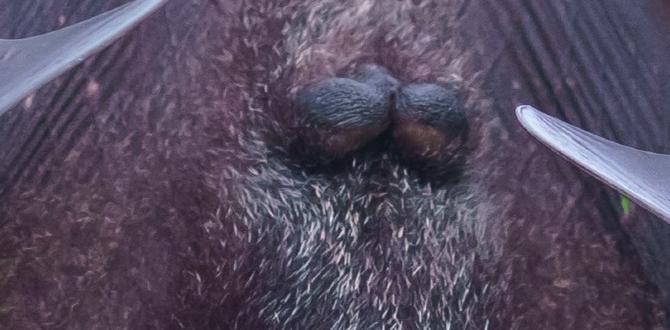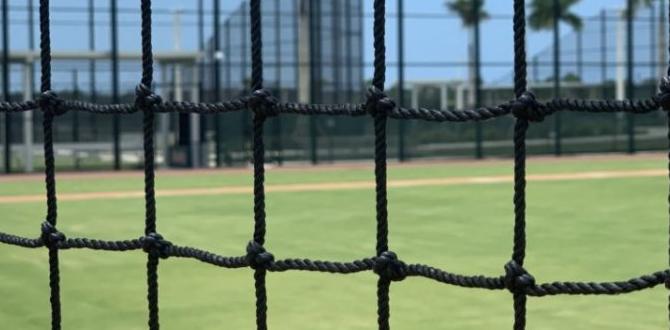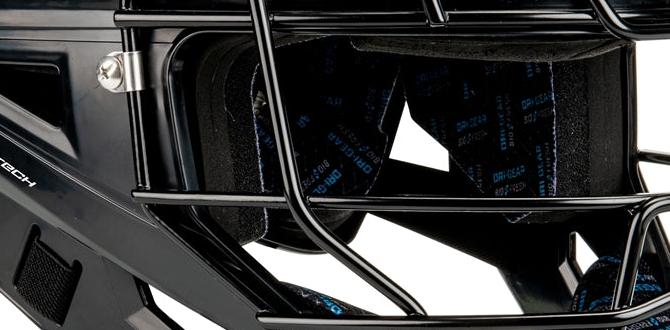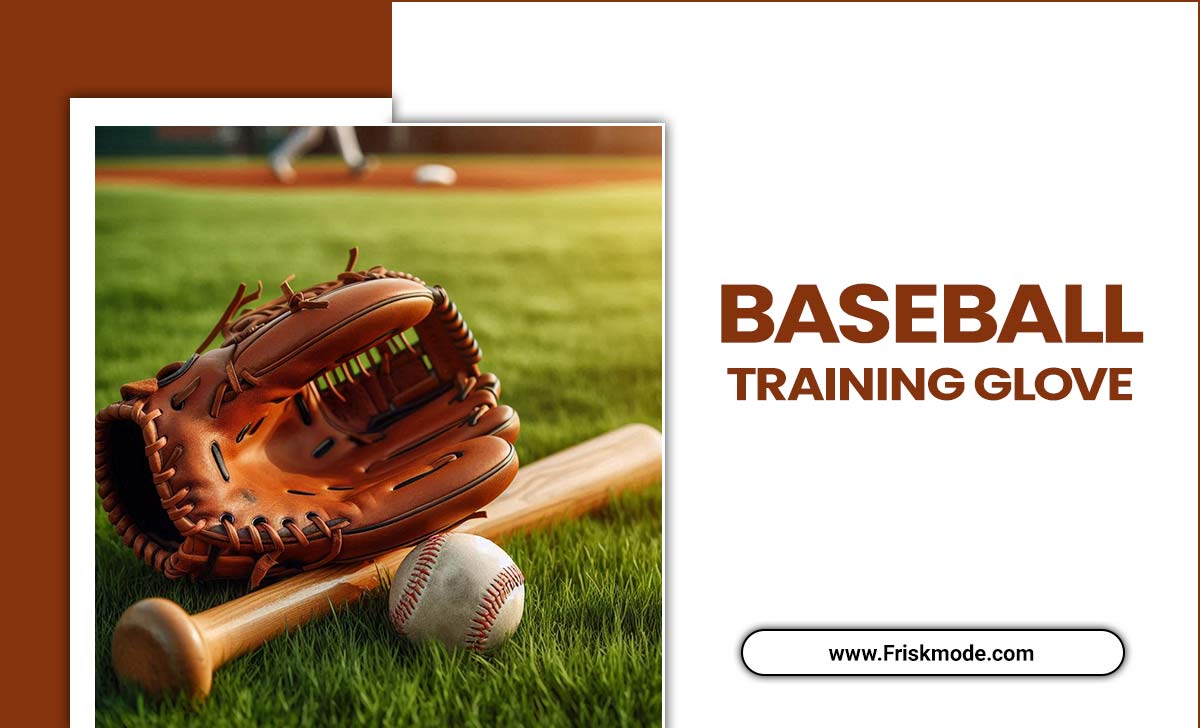Quick Summary: Evoshield catchers leg guards offer superior protection and comfort, making them an essential piece of gear for any catcher. Designed for optimal mobility and impact absorption, they help prevent injuries, allowing you to focus on your game. Choosing the right pair ensures durability and performance behind the plate.
Catching can be tough. You face pitches hurtling towards you at high speeds, and sometimes foul tips sting your legs. It’s easy to get worried about getting hurt, especially when you’re just starting out or trying to improve. But what if you could feel more confident and protected every time you step behind the plate? That’s where the right gear comes in, and today, we’re talking about something super important for catchers: leg guards. Specifically, we’ll dive into why Evoshield catchers leg guards are a fantastic choice for players at every level. We’ll walk you through what makes them special, how to pick the best ones for you, and how they can help you play better and safer. Get ready to feel more secure and in control during your next game!
Why Catcher’s Leg Guards Are a Game Changer
Think about a catcher’s job – you’re the general on the field, constantly in the line of fire. Your legs take a beating from pitches, foul balls, and even the occasional collision at home plate. Without proper protection, these impacts can lead to bruises, sprains, or worse.
Catcher’s leg guards are designed specifically to absorb and disperse that impact. They create a barrier between your legs and the incoming force, significantly reducing the risk of injury. Beyond just safety, good leg guards also impact your performance. They’re built to allow for mobility, so you can still get in your stance, block pitches, and throw runners out without feeling weighed down or restricted. This means you can play with more confidence and focus on what truly matters: making the play.
The Evoshield Difference: What Sets Them Apart
Evoshield has earned a reputation for creating high-quality protective gear that athletes trust. When it comes to their catchers leg guards, this dedication to performance and player well-being shines through. What really makes Evoshield stand out? It’s their focus on both advanced protection and thoughtful design.
Innovative Protection Technologies
One of the core reasons Evoshield is so respected is its use of innovative materials. Their signature technology, often referred to as Gel-to-Shell™, is a game-changer. Here’s how it works:
- Shipped as a soft, flexible material: The protective components arrive feeling pliable and easy to handle.
- Reaction to air: Once you open the package and expose the material to air, it begins to harden.
- Custom Molds to Your Body: Within minutes, the material custom molds to the unique contours of your leg. This creates a hard, protective shell that fits you perfectly, offering unparalleled impact dispersion and a personalized feel.
- Superior Impact Absorption: This hardened shell is engineered to shatter and absorb the energy from impacts, preventing it from transferring to your body. Think of it like a mini-shield that forms precisely where you need it most.
This custom-molding process is crucial because it ensures that the protection isn’t just generic; it’s tailored to your body. This leads to a better fit, improved comfort, and, most importantly, more effective protection from those hard-to-handle foul tips and errant pitches.
Comfort and Mobility
Protection is key, but so is the ability to actually play the game effectively. Evoshield understands that catchers need to be agile. Their leg guards are designed with:
- Lightweight Materials: Evoshield often uses advanced, lightweight composites to reduce bulk and fatigue.
- Ergonomic Design: The guards are shaped to follow the natural lines of the leg, allowing for a full range of motion. This means you can crouch, shift your weight, and make throws without feeling restricted.
- Breathable Padding: Many models feature moisture-wicking liners and strategically placed vents to keep you cool and comfortable, even during long games or intense practices.
- Secure Strapping Systems: Adjustable, durable straps ensure the leg guards stay securely in place without digging into your skin. This means less time spent readjusting and more time focused on the game.
When you combine this advanced protection with a design that prioritizes comfort and freedom of movement, you get leg guards that don’t just protect you, but also help you perform at your best.
Choosing the Right Evoshield Catcher’s Leg Guards
With several models and variations available, selecting the perfect Evoshield leg guards might seem a bit daunting. But don’t worry! We’ll break down the key factors to consider to ensure you make a choice that suits your needs and playing style. Think of this as your personal guide to finding that ideal fit.
Fit and Sizing
The most crucial aspect of any protective gear is how it fits. Leg guards that are too loose can shift, leaving you exposed, while those that are too tight can be uncomfortable and restrict movement. Evoshield typically provides sizing charts based on player height and leg length measurements.
- Measure Yourself: Use a flexible tape measure. Start at the kneecap and measure down to the top of your shoe when you’re in a typical catching stance.
- Check the Size Chart: Always refer to the specific sizing guide for the model you’re interested in. Sizing can vary slightly between different Evoshield lines.
- Consider Your Stance: If you have a particularly deep or shallow stance, make sure your measurements account for that.
A proper fit means the guards cover your knee, shin, and ankle adequately, with no major gaps when you’re in your catching position. The custom molding feature of Evoshield helps a lot with fit, but starting with the right size is still paramount.
Protection Level vs. Mobility
Evoshield offers various leg guard models, often balancing different levels of protection with mobility. Generally, more robust padding and shell coverage might offer slightly more protection but could feel a bit bulkier. Conversely, lighter, more streamlined models prioritize speed and agility.
Consider your:
- League Rules: Some leagues might have specific requirements for catcher’s gear.
- Playing Level: Higher levels of play often involve faster pitches and harder hitters, which might lean towards more comprehensive protection.
- Personal Preference: Do you prefer maximum padding, or do you prioritize being lightweight and quick?
For beginners and youth players, models that offer a good balance of protection and comfort are usually ideal. As you get more experienced, you might develop preferences for specific features.
Key Features to Look For
Beyond the core fit and protection, several features can enhance your experience with Evoshield leg guards:
- Ventilation: Look for designs with breathable mesh and strategically placed vents to help manage heat and moisture, keeping your legs drier and more comfortable.
- Removable Liners: Some high-end models might have removable and washable liners, which are great for hygiene and longevity.
- Strap Durability: Ensure the straps are strong, easy to adjust, and have a secure buckle or Velcro system that won’t loosen during play.
- Ankle Protection: Pay attention to how the ankle is protected. Some guards have extended coverage or additional padding here, which can be beneficial against foul tips.
Evoshield Catcher’s Leg Guard Models: A Quick Look
While Evoshield continuously updates its product lines, here are common types of leg guards you might encounter. Always check the latest specifications from Evoshield or reputable retailers for current offerings.
| Model Type | Primary Focus | Who is it Best For? | Key Features Example |
|---|---|---|---|
| Pro-SRZ™ Series | Maximum protection and performance. | Serious players, competitive leagues, those seeking top-tier defense. | Advanced Gel-to-Shell™ technology, enhanced knee and shin coverage, superior impact dispersion. Often features premium padding and ergonomic design for optimal comfort. |
| Unified Series | Balanced protection with mobility. | All-around catchers, youth players looking for reliable protection, players who value agility. | Good integration of Gel-to-Shell™ technology, comfortable fit, designed for a good range of motion. A solid choice for everyday play. |
| Youth Series | Lightweight, comfortable protection optimized for younger players. | Youth league players, developing players, those needing gear scaled for smaller frames. | Often features lighter materials, simpler strap systems for easy adjustment, and coverage designed for youth sizing. Focus on ease of use and comfort. |
Remember to visit the official Evoshield website or consult with gear experts at baseball retailers for the most up-to-date information on their product lines and to find the specific model that calls to you.
How to Properly Use and Care for Your Evoshield Leg Guards
Once you’ve invested in a great pair of Evoshield leg guards, it’s essential to know how to use and maintain them to ensure they last and perform at their best. Proper care not only prolongs the life of your gear but also ensures consistent protection and comfort.
The Gel-to-Shell™ Process: Activation and Molding
This is a unique step for Evoshield guards and crucial for getting that custom fit. Don’t skip this!
- Unpack Carefully: Open the sealed pouch that contains the protective inserts. You’ll notice they are soft and pliable at this stage.
- Expose to Air: Immediately after opening, lay the inserts flat on a clean surface. This allows them to begin reacting with the air.
- Position on Your Legs: Place the now-receptive inserts onto your leg guards, ensuring they are oriented correctly (e.g., knee guard goes on the knee).
- Put on the Leg Guards: Securely strap the leg guards onto your legs. Ensure they are snug and positioned correctly.
- Simulate Game Stance: Stay in your comfortable catching stance for about 5-10 minutes. This allows the material to mold precisely to the shape of your legs. Avoid excessive movement during this period.
- Hardening Process: After molding, the inserts will continue to harden over the next 20-30 minutes, forming a durable, custom-fit shell.
It’s recommended to perform this molding process before your first game or practice to ensure a perfect fit from the start. You generally only need to do this process once, as the shell retains its shape.
Wearing Your Leg Guards Effectively
The way you strap and adjust your leg guards can make a big difference in comfort and security.
- Strap Order: Most leg guards have straps for the thigh, knee, and calf. Generally, it’s best to secure the knee and calf straps first, then the thigh strap. This helps the guard sit correctly and prevents the thigh pad from sliding down.
- Snug, Not Tight: Straps should be snug enough to keep the guard in place without restricting blood flow or causing discomfort. You shouldn’t feel digging or pinching.
- Check Coverage: Ensure the knee cap and shin are fully covered by the protective padding. The guard should extend low enough to protect your ankle area effectively.
- Integrate with Other Gear: Make sure your leg guards fit comfortably with your shin guards, if applicable, and don’t interfere with your cleats or base.
Cleaning and Maintenance for Longevity
Keeping your gear clean is vital for comfort, hygiene, and its lifespan.
- Wipe Down: After each use, wipe down the exterior of the leg guards with a damp cloth to remove sweat, dirt, and grass stains.
- Clean Liners: If your leg guards have removable liners, take them out and wash them according to the manufacturer’s instructions. This usually involves hand washing with mild soap and cool water. Never machine wash or dry these components.
- Air Dry Thoroughly: Always allow all parts of your leg guards to air dry completely before storing them. Never store them in a damp bag, as this can lead to mildew and unpleasant odors.
- Avoid Harsh Chemicals: Do not use harsh detergents, solvents, or abrasive cleaners, as they can damage the materials.
- Inspect Regularly: Periodically check the straps, buckles, and stitching for any signs of wear and tear. Address any issues promptly to prevent bigger problems.
By following these simple steps, your Evoshield leg guards will provide reliable protection and comfort for seasons to come.
Safety First: Understanding Catcher’s Injuries and Prevention
As a catcher, you’re in a position where injuries can happen. Understanding these risks and how your gear helps prevent them is fundamental to playing smart and staying on the field.
Common Catcher Injuries
The repetitive stress and impact of catching can lead to several common injuries:
- Bruised Shins/Knees: Directly from foul tips or pitches that get past the mitt.
- Knee Sprains/ACL Tears: Often from awkward landings, diving for foul balls, or collisions at home plate.
- Ankle Sprains: From twisting your ankle while moving in your stance or fielding a ground ball.
- Muscle Strains: In the thighs or calves from the constant squatting and explosive movements across a long game.
- Impact-Related Bruising: Anywhere on the legs from direct hits.
How Evoshield Leg Guards Mitigate Risks
Evoshield leg guards are designed with injury prevention in mind. Their key features directly address these common risks:
- Impact Dispersion: The Gel-to-Shell™ technology hardens to create a rigid barrier. This barrier absorbs and spreads the force of a foul tip or direct impact across a larger area of your leg, significantly reducing the concentrated force on any single point. This drastically lowers the chance of painful bruises and more serious fractures.
- Knee and Shin Coverage: The extended design ensures that the vulnerable knee cap and the entire shinbone are covered. This is crucial for deflecting pitches and protecting against errant swings.
- Custom Fit for Stability: The personalized fit achieved through molding helps the guard stay in place. This stability can prevent a guard from shifting during a sudden movement or collision, which could otherwise expose a part of your leg to injury.
- Reduced Fatigue: While it might seem counterintuitive, well-designed, lightweight leg guards can actually reduce fatigue by providing support and better weight distribution. Less fatigue means better focus and a lower likelihood of making mistakes that lead to injuries.
While leg guards are incredibly effective, they are part of a larger safety picture. Proper conditioning, warm-ups, and knowing your limits are also vital for a catcher’s health. For more insights into overall baseball safety, resources from organizations like the USA Baseball can provide valuable guidance.
Frequently Asked Questions about Evoshield Catcher’s Leg Guards
Q1: How do I activate the Gel-to-Shell™ technology on my Evoshield leg guards?
A1: Simply open the sealed pouch containing the inserts. Once exposed to air, they become pliable. Place them in the leg guards and wear them in a catching stance for about 5-10 minutes. The material will then harden and mold to your leg.
Q2: Can I wash my Evoshield leg guards?
A2: You can wipe down the exterior with a damp cloth. If your leg guards have removable liners, they can often be hand-washed with mild soap and cool water. Always air dry them completely. Never machine wash or dry the shells or liners.
Q3: Are Evoshield leg guards suitable for youth players?
A3: Yes, Evoshield offers specific youth series leg guards designed for smaller frames, prioritizing comfort, lightweight protection, and ease of adjustability for younger athletes.
Q4: How do I know if my leg guards fit correctly?
A4: They should cover your knee, shin, and ankle without significant gaps when you’re in your catching stance. Straps should be snug but not uncomfortably tight. The guards should stay in place during movement.
Q5: Will wearing Evoshield leg guards restrict my mobility?
A5: Evoshield designs their leg guards for optimal mobility. The ergonomic shape and flexible materials allow for a full range of motion necessary for catching, blocking, and throwing.
Q6: How often should I replace my leg guards?
A6: With proper care, Evoshield leg guards are very durable and can last for several seasons. Inspect them regularly for signs of significant wear, like torn straps or damaged padding. Replace them if they no longer




